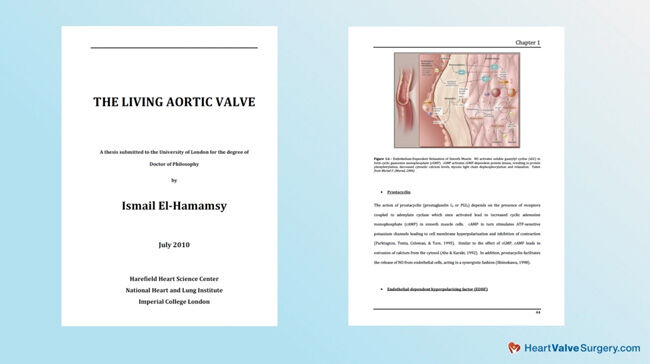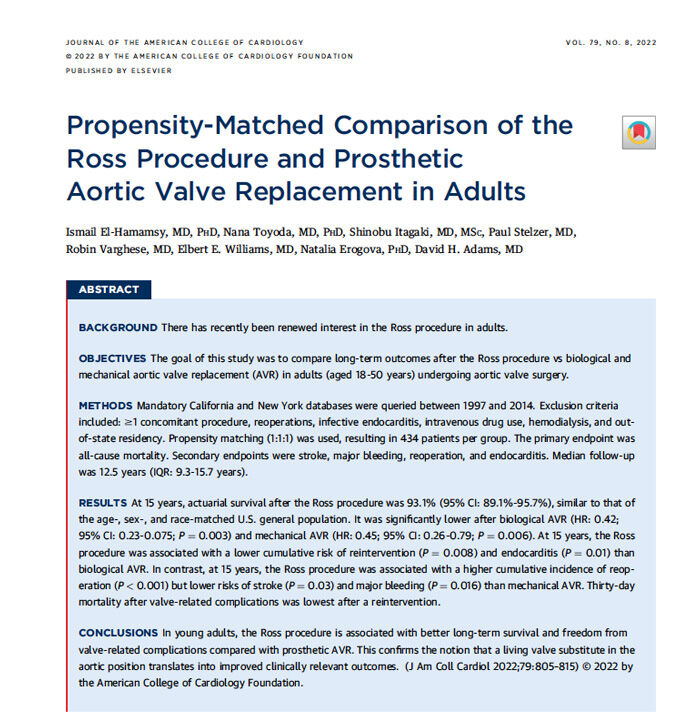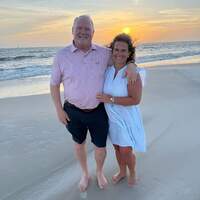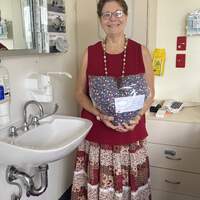Patient Research Alert: Ross Procedure Survival Advantages & More
Written By: Adam Pick, Patient Advocate, Author & Website Founder
Medical Expert: Ismail El-Hamamsy, MD, Professor of Cardiovascular Surgery and System Director of Aortic Surgery, Mount Sinai Hospital
Published: April 26, 2022
Patient interest in the Ross Procedure has skyrocketed within the HeartValveSurgery.com community. While this unique form of aortic valve replacement has been disregarded by some physicians, new durability research and patient success stories have created a revived interest in this advanced operation for select patient types.
Recently, Dr. Ismail El-Hamamsy published a very interesting study in the Journal of American College of Cardiology about the Ross Procedure that generated even more interest in the Ross Procedure. In the video below, we interviewed Dr. El-Hamamsy about the findings of his new Ross Procedure research and its impact on patients diagnosed with aortic valve disease.
Key Findings About the Ross Procedure
The key learnings from Dr. El-Hamamsy’s research about the Ross Procedure and our interview include:
- With nearly 600 Ross Procedures completed, Dr. El-Hamamsy is one of the most experienced Ross Procedure surgeons in the world. Dr. El-Hamamsy lectures and conducts training courses specific to the Ross Procedure in cardiac centers around the world.
- The Ross Procedure is an advanced form of aortic valve replacement. Instead of using a mechanical or biological valve made from cow or pig tissue, the patient’s pulmonary valve is removed from the pulmonary position and moved to the aortic position. Then, a human donor valve is inserted in the pulmonary position. As Dr. El-Hamamsy states, “The Ross Procedure is a bit like a domino operation.”
- There are several reasons why Dr. El-Hamamsy suggests that the pulmonary valve is the “ideal aortic valve substitute” including (i) the pulmonary valve is a living valve, (ii) the pulmonary valve looks exactly like the aortic valve, and (iii) the pulmonary valve is the patient’s own tissue.
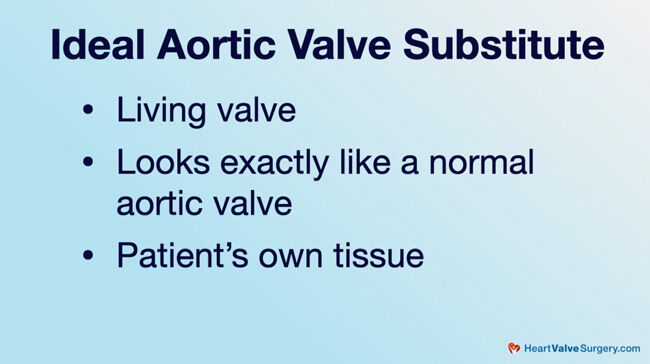
- Dr. El-Hamamsy’s personal experience with the Ross Procedure began over 15 years ago when he was writing his PhD thesis, “The Living Aortic Valve”, which revealed several cellular and molecular mechanisms of aortic valve disease and aortic valve function. While developing his thesis, Dr. El-Hamamsy worked with Dr. Magdi Yacoub, a Ross Procedure surgeon, who was evaluating randomized trials specific to the Ross Procedure. The results of those trials suggested that the Ross Procedure could, when performed correctly, restore patient survival for the long-term.
- There are many advantages of the Ross Procedure including (i) normal survival up to 20 years, (ii) excellent hemodynamics (blood flow through the heart), and (iii) lower risks of infections, stroke and blood clots.
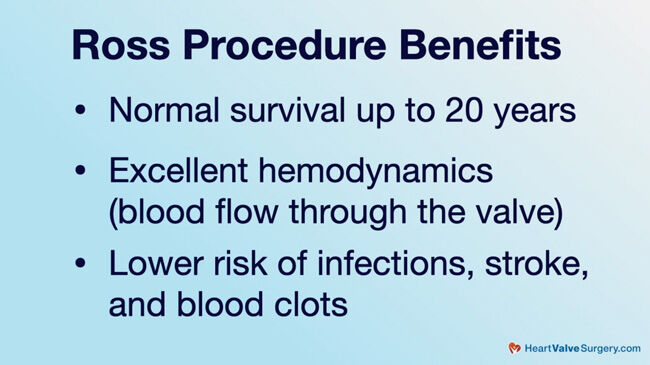
- In the new Ross Procedure research study, “Propensity-Matched Comparison of the Ross Procedure and Prosthetic Aortic Valve Replacement in Adults”, published in the Journal of American College of Cardiology, Dr. El-Hamamsy evaluated the performance and durability of the Ross Procedure across multiple cardiac centers in California and New York. This was a unique approach for research which previously focused on Ross Procedure results from a single surgeon or cardiac center. The study also evaluated the performance of the Ross Procedure compared to patients who received mechanical and bioprosthetic tissue valves.
- Research Finding #1: At 15 years after surgery, survival of patients who underwent the Ross Procedure was exactly identical to the age, sex and race match of the United States general population.
- Research Finding #2: If patients received a mechanical or a biological aortic valve replacement, the patient’s life expectancy was lower at 15 years.
- Research Finding #3: Rate of valve-related complications was significantly lower with the Ross Procedure than it was with a biological or mechanical valve replacement.
- Research Finding #4: Thirty-day mortality after a stroke, major bleeding and endocarditis were significantly higher than the mortality associated with a reoperation.
- Dr. El-Hamamsy believes one of the key advantages that leads to longer survivability of the Ross Procedure compared to mechanical and biological valves may be hemodynamics. Dr. El-Hamamsy states, “Our hypothesis is that the answer is in the hemodynamics across the valve and how much the ventricle has to work, particularly when patients exercise.”
- To further help surgeons and their patients benefit from the Ross Procedure, Dr. El-Hamamsy is continuing his research. Recently, Dr. El-Hamamsy published an editorial comment in the Journal of American College of Cardiology titled, “The Ross Procedure: Clinical Relevance, Guidelines Recognition and Centers of Excellence”, that addressed (i) opportunities to enhance surgical techniques and (ii) the advantages of developing Ross Procedure Reference Centers.
- For patients considering the Ross Procedure, Dr. El-Hamamsy’s top advice is (i) to research the Ross Procedure and (ii) talk openly with the patient’s cardiologist and surgeon about the Ross Procedure. As Dr. El-Hamamsy states, “Not all surgeons can do the Ross Procedure, but all sorts of surgeons should know about the Ross Procedure and should be able to propose to the patient to discuss with a surgeon in the vicinity or in the region who does the Ross Procedure.”
Many Thanks Dr. El-Hamamsy & Mount Sinai Hospital
On behalf of our patient community, many thanks to Dr. El-Hamamsy for taking the time to share his new research and editorial about the Ross Procedure with us. And, many thanks to Mount Sinai Hospital for taking great care of the HeartValveSurgery.com patients.
Related Links:
- Patient Webinar: Advantages of the Ross Procedure
- Ross Procedure Success Story: Elizabeth Runs to Support Heart Disease Patients
- See the Interactive Surgeon Profile of Dr. Ismail El-Hamamsy
Keep on tickin!
Adam
Video Transcript:
Adam Pick: Hi, everybody. It’s Adam with heartvalvesurgery.com, and this is a research alert all about the Ross Procedure for aortic valve replacement. I am thrilled to be joined by Dr. Ismail El-Hamamsy, who’s a professor of cardiovascular surgery and system director of aortic surgery at Mount Sinai Hospital in New York City, New York. During his extraordinary career, Dr. El-Hamamsy has performed nearly 600 Ross Procedures while coaching and training surgeons all over the world in this very unique operation. Dr. El-Hamamsy, it is great to see you, and thanks for being with us today.
Dr. El-Hamamsy: Thank you, Adam. It’s great to be with you and to be with the members of your heartvalvesurgery.com community.
Adam Pick: Dr. El-Hamamsy, I first met you back at the Heart Valve Society conference several years ago, and I was immediately struck by your commitment and dedication to the Ross Procedure. For a patient who is newly diagnosed with aortic valve disease, can you share what is the Ross Procedure and what’s your experience with it?
Dr. El-Hamamsy: Adam, when your aortic valve doesn’t work anymore and needs to be replaced, you essentially have two big options. One is using a prosthetic valve, and that can be either an animal’s valve or a mechanical valve, and the other alternative is a Ross Procedure. What is a Ross, and how is it different? Instead of using an artificial valve off the shelf, we actually use another valve in the heart called the pulmonary valve that we put in the aortic position to replace the diseased aortic valve, and then we replace the pulmonary valve with a human cadaveric pulmonary valve. It’s a bit like a domino operation. The idea behind it is that the aortic valve is the most important valve in the heart, and so we want to have the ideal substitute in that position, and if one has to imagine the ideal aortic valve substitute, it would be a living valve that looks exactly like the normal aortic valve, and ideally, it would be your – the patient’s own tissues. The pulmonary valve serves all of these three purposes.
Adam Pick: Dr. El-Hamamsy, I’m really curious. What is your personal experience with the Ross Procedure?
Dr. El-Hamamsy: My experience with the Ross, Adam, started many years ago. Almost 15 years ago, I went to London after finishing my cardiac surgery to do a PhD in the lab, really, and my focus during that time was to try to understand the cellular and molecular mechanisms of the aortic valve disease and aortic valve function, and that led me to a better studying and understanding the role of the Ross Procedure in patients who have aortic valve disease. I was very lucky to work with Professor Yacoub, who’s one of these pioneers of aortic surgery and the Ross procedure in the world.
Back then we studied the results of a randomized trial, which he had conducted, and for the very first time, we realized that after placing the aortic valve, there is a possibility of restoring patient survival in the long-term, something that had never been observed with prosthetic aortic valve replacement, and so from that point on, it really spurred up my interest in the Ross Procedure and my desire to not only build a practice around aortic reconstructive surgery but really to study the role of the Ross in much more detail over the years. Since 2010 I’ve performed close to 600 Ross Procedures, and I’m seeing these volumes increase on a yearly basis as the evidence has increased as well.
Adam Pick: Dr. El-Hamamsy, let’s dive a little bit deeper about the advantages of the Ross Procedure. You talked about the patient’s own tissue remaining in his or her heart. Why is that so important?
Dr. El-Hamamsy: It’s really important because the aortic valve is far more than just open, close, open, close. The aortic valve actually performs many sophisticated functions in this very, very crucial little corner of the heart where all the blood that exits with every heartbeat comes through. You have the coronary arteries that feed the heart muscle that sit right above the aortic valve cusps, and all of this has to work in sync in a perfect way so that patients, whether they’re at rest or whether they’re active, can really perform anything without any limitations, and more importantly, their left ventricle, which is the pumping chamber of the heart, is able to work without any additional effort like it would when the valve is diseased or even like it does when one has an artificial valve in place with a rigid sewing ring in that position.
Having a valve that is alive and that is in sync with the heart, that is in sync with all the hormones that are circulating is important, and more importantly for patients, it translates into long-term with benefits such as normal survival up to 20 years after surgery, such as excellent hemodynamics, which is the flow of blood across the valve when the patients are resting or exercising. It translates into a lower risk of infections in the valve, lower risk of stroke, lower risk of blood clots forming. All of this because the valve is alive and it’s able to perform normal functions that a normal valve would in that position.
Adam Pick: Dr. El-Hamamsy, in terms of your specialties that you have there – Ross is obviously humongous in your practice – can you talk about why you chose to make that such an important part of what you’re doing there at Mount Sinai to help patients?
Dr. El-Hamamsy: From very early on in my practice, Adam, one thing I noticed looking at the data and the research that was out there was that when patients have aortic valve replacement at a younger age, let’s say under the age of 60, when we look at their long-term outcomes, the results are not quite as good as we as surgeons would like to serve our patients, and what do I mean by they’re not quite that good. If you look at survival of these patients 15 and 20 years down the line, there’s always a bit of a gap in their life expectancy versus what we would observe in someone their age in the general population who wouldn’t have needed aortic valve surgery, and that really triggered my interest into trying to understand why that is happening and how can we find better solutions to better serve our younger patients who need aortic valve replacement.
The Ross became a natural solution following the research work that I have done in the lab for four years doing my PhD. By the way, the title of my PhD thesis was The Living Aortic Valve, so I really spent four years trying to understand these complex and very sophisticated functions – structures and ultimately, we landed on the Ross, and one study after the next, some from our group and some from other groups, shows the exact same signal study after study after study, and that is if patients undergo a Ross procedure under the age of 60 and we look at their long-term survival, it is always identical to that of the general population, and there are very few operations in cardiac surgery where we’re able to literally tell patients that we are restoring their survival to that of the general population. Not only are we relieving the symptoms but we’re really giving them back years of life expectancy, which is very precious and unique within our field.
Adam Pick: Dr. El-Hamamsy, I can’t thank you enough for all of the research you’ve done throughout your career because I’m one of the patients who benefited from the Ross Procedure. I’m 15 years out now. I’ve not had any interventions since, and my quality of life has been fantastic. I’m very active, and I have not had to take blood thinners as if I had taken a mechanical valve, so thank you. Now let’s talk about more research that is just coming out from you and your team there at Mount Sinai. Can you share a little bit about this new study you just published?
Dr. El-Hamamsy: Congratulations, Adam, on your 15th anniversary. This is really a wonderful story and one that we never get tired of hearing from our patients when we hear that they’re going strong with their valves and that they’re able to go about their lives. It’s really all about life expectancy and quality of life. The research that we did that we recently published in the Journal of the American College of Cardiology is a study where as I told you earlier there have been increasing numbers of studies showing that survival can be restored in the long-term after the Ross Procedure and that survival was slightly better with the Ross than with mechanical valves.
What was lacking in some of these studies, though, or part of the limitations was the fact that a lot of them came from single surgeons or single centers, so it wasn’t clear that this data could be generalized with a broader audience, and secondly, there weren’t yet many studies looking at the Ross Procedure versus tissue aortic valve replacement, and so what we decided to do was to look at the two largest states in the US, California, New York, where we have – where it’s actually rather easy to follow and track patients’ information in the long-term in terms of survival, in terms of readmissions, in terms of what we call valve-related complications, things such as stroke or major bleeding or endocarditis, which is an infection of the valve, or reoperation.
We looked over a long period of time at all patients who underwent a Ross Procedure in California and New York state, and we matched these patients one by one with patients who either had a tissue aortic valve replacement or a mechanical aortic valve replacement, so we had nearly 450 patients in each of these three groups, and we followed these patients over time, and what we found from that study, which again came from different centers, different surgeons performing these operations over a period of time, is that at 15 years after surgery, survival of the patients who underwent the Ross Procedure was exactly identical to the age, sex, and race matched US general population.
In other words, let’s say you’re 40 years old and undergo a Ross procedure, by the time you reach 55 years of age, your chances of having gotten to that point are exactly the same as a 40-year-old American who does not need aortic valve surgery. In contrast, if patients had a mechanical or a biological aortic valve replacement, their life expectancy was not quite the same. Survival was slightly lower at 15 years than it was with the Ross Procedure, again, highlighting the importance of having a living valve in that aortic position.
In addition to the survival message that we saw, what we also noticed are two things. One is that the rate of valve-related complications was significantly lower with the Ross Procedure than it was with a biological or a mechanical valve replacement. How so? Versus biological valves, there were less endocarditis and there was less reoperations in the long-term, and compared to mechanical valves, there were less strokes and there were less major hemorrhages associated with the Ross Procedure. When you put all this together, you have better survival and less complications related to the Ross compared to biological or mechanical AVR.
The last thing we found is that – and that’s something very unique that had not been studied in previous research – and that is to try to give weight to the various complications that happen after you’ve had your valve replaced, so things such as, again, a stroke, bleeding, endocarditis, or reoperation. Which one is riskier to have? As a patient, you’re always concerned, and there’s this obsession about am I going to need another operation down the line, but one of the things that one should always remember, if you have a mechanical valve, you go on blood thinners, you have a risk of bleeding or having a stroke, you can have an infection, and what we notice is that 30-day mortality after a stroke, major bleeding, endocarditis was significantly higher than the mortality associated with a reoperation.
In other words, if you have to take a complication associated with any of these three surgical options, it seems that a reoperation is your safest bet. It sounds very counterintuitive, but it really was the safest with the risk of 1% at 30 days, and that risk went up to 13% if you had an infection. Like I always tell my patients, Adam, as much as it’s inconvenient to need a reoperation one day, one should not see it as the end of the road but rather as a bump on the road, and so if we can restore your survival, minimize the risk of stroke, bleeding, or infection, and perhaps, one day you may need a reoperation, that sounds like a pretty good proposition.
Adam Pick: Dr. El-Hamamsy, this is really important information for patients to consider about the Ross Procedure as they are thinking about what is the best option for their aortic valve replacement, and I understand, though, you’re working on potentially some new research and maybe an editorial that you recently came up. Can you share with patients what that is all about?
Dr. El-Hamamsy: We’re continuing research in the field of the Ross Procedure specifically with the aim of further improving on the data that we’re observing in terms of the durability of the operation and in terms of survival in the long-term, so one of the things that we’re working on right now is to try to understand why survival is better after a Ross operation versus a mechanical or a biological aortic valve replacement. Our hypothesis is that the answer is in the hemodynamics across the valve and how much the ventricle has to work, particularly when patients exercise.
We’re conducting a research study right now where we have patient go in an MRI machine. They bike in the MRI machine with increasing degrees of exercise and activity and effort and whether they had a mechanical, a biological valve, or a Ross Procedure, we’re looking at the strain in the ventricle, and that may give us some very important clues as to why we’re seeing that survival difference in the long-term. The other part of the work is really trying to improve our surgical techniques, because let’s remember this is a very technical operation, and any time we talk about technical operations, it means that these things can continue to improve over time as we keep learning about the things that work but also some of the things that don’t work, and that’s why our results today are so much better than they were 20 or 30 years ago, but there’s still room for improvement.
The last thing that we – that I’m really committed to doing together with other surgeons who are committed to the Ross is to ensure that patients know that if they go for a Ross Procedure in a given center or hospital or with a surgeon that this operation will be executed safely, effectively, and then they will have a durable result just like the one that you had, Adam. We’re trying to define what we call Ross reference centers, and a Ross reference center is something that depends on more than just a surgeon doing Ross Procedures. We recently wrote an editorial about this, and the reference center really encompasses many team players. Just like a football team, you can’t just have a very good quarterback. You need a good offensive line, a good defensive line.
You need good, dedicated cardiac anesthesia, ICU, imaging, a valve cardiologist. All of these people need to be able to carefully select the patients, to execute the surgery perfectly well, and to be able to follow the patients in the aftermath, and that will help us avoid some of the mistakes that were made in the ’90s when many surgeons, many centers were – started performing the Ross Procedure. It is inevitably a more complex operation, and that inevitably can lead to poorer results in low volume centers.
Adam Pick: Dr. El-Hamamsy, I’ve got to ask you a really important question that I’m sure patients out there are wondering is given all the research, given your clinical experiences, all your work with patients, what is your number one piece of advice for a patient who is thinking that the Ross Procedure might be right for them?
Dr. El-Hamamsy: That’s a great question, Adam, and I think if I’m a patient and I’m thinking that perhaps this is something I want to discuss or that I want to explore further, there are many different avenues, and I think heartvalvesurgery.com is a great resource. There’s a lot of material in it, but more importantly I think patients can really just talk about it very openly with their cardiologist or with their surgeon whom they meet. Now not all surgeons can do the Ross Procedure, but all sorts of surgeons should know about the Ross Procedure and should be able to propose to the patient to discuss with a surgeon in the vicinity or in the region who does the Ross Procedure.
Nowadays, one of the things that has come out of COVID is the ability to do these video consults without having o travel to see the surgeon, so a patient can easily reach out to surgeons through your website or through other resources that they know do Ross Procedures and just talk with them. The more information patients will have, the better decisions they will be able to make, and remember, there’s no good or bad decision. There’s no perfect solution and terrible solution. It’s all about patient preferences, what matters the most to different patients, but the only way to get to the answer that fits the patient’s preferences best is to talk to as many people including those who can perform the Ross Procedure in a very regular and safe way.
Adam Pick: Dr. El-Hamamsy, I absolutely love your ideas there and your advice about getting education and getting empowered so that you can make the right decision for you. On behalf of all the patients in our community, Dr. El-Hamamsy, I want to extend a huge thank you for all your tireless commitment, your research, your clinical experiences in advancing this unique form of aortic valve replacement there at Mount Sinai. Thanks so much for what you do, and thanks for being with us today.
Dr. El-Hamamsy: Adam, thank you for having me, and thanks for all the work that you’re doing as well.
Adam Pick: Hi, everybody, it’s Adam. I hope you enjoyed that video, and don’t forget you can always subscribe to our YouTube channel. Watch the next two educational videos coming up on your screen or click the blue button to visit heartvalvesurgery.com.
